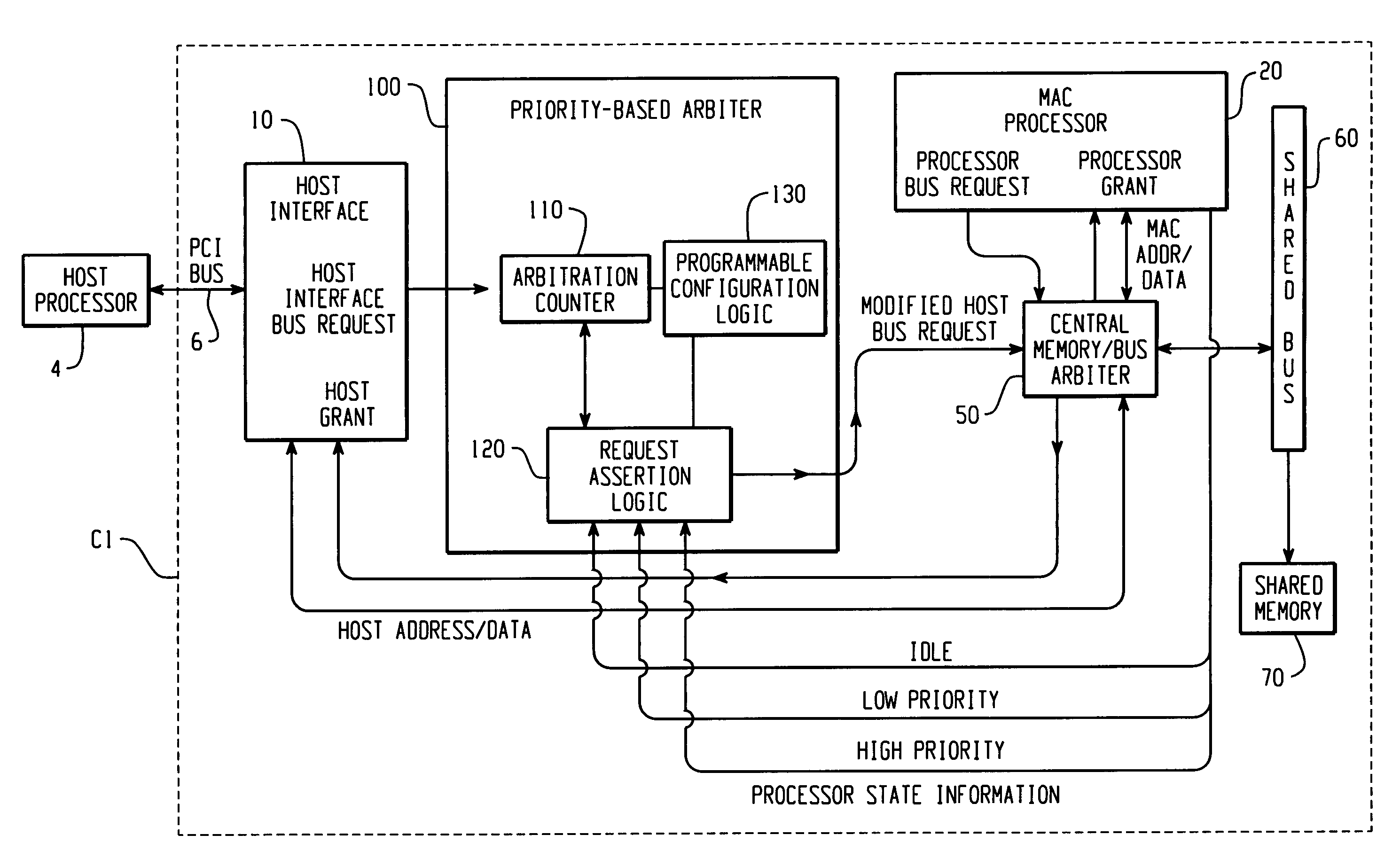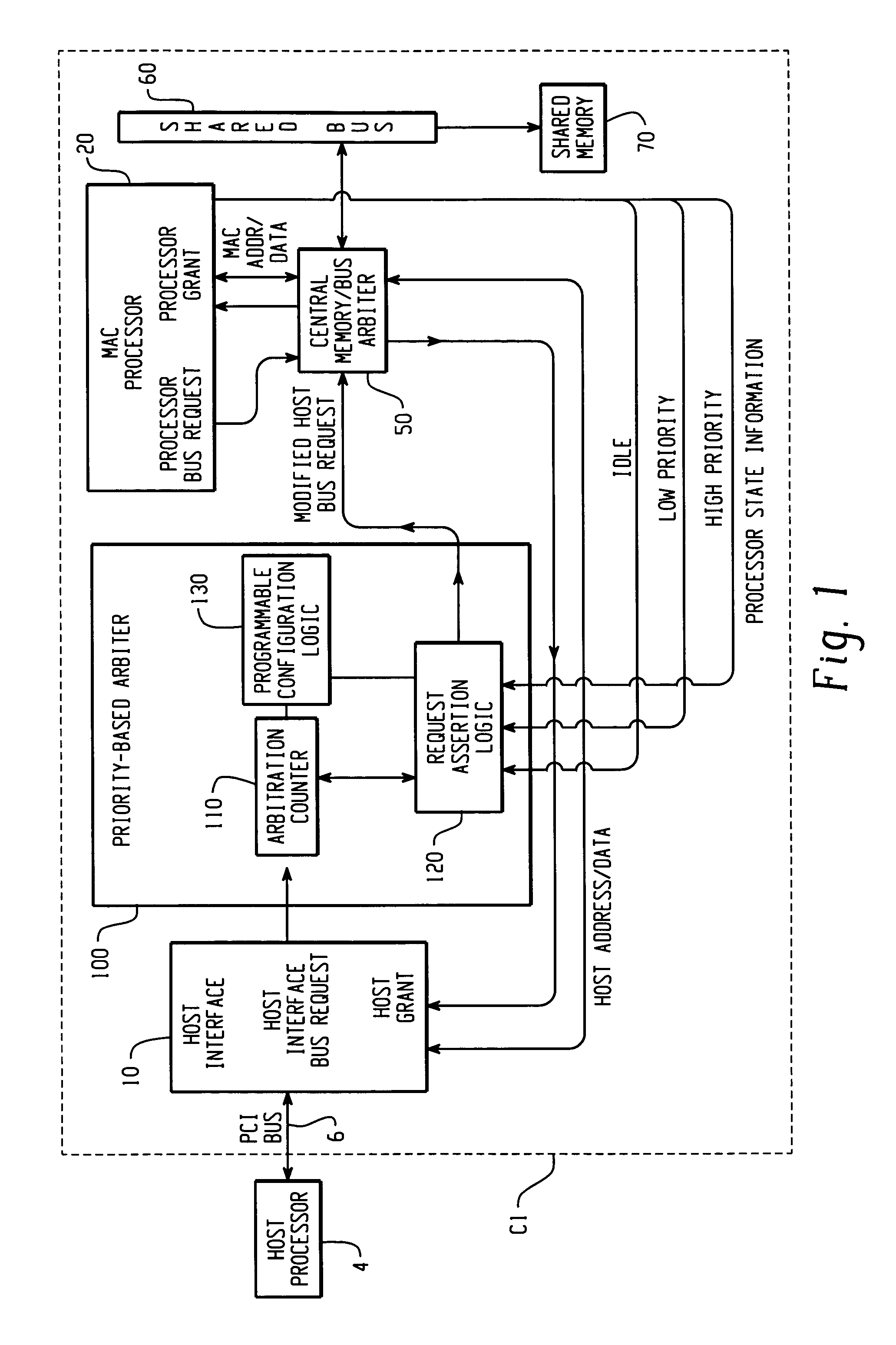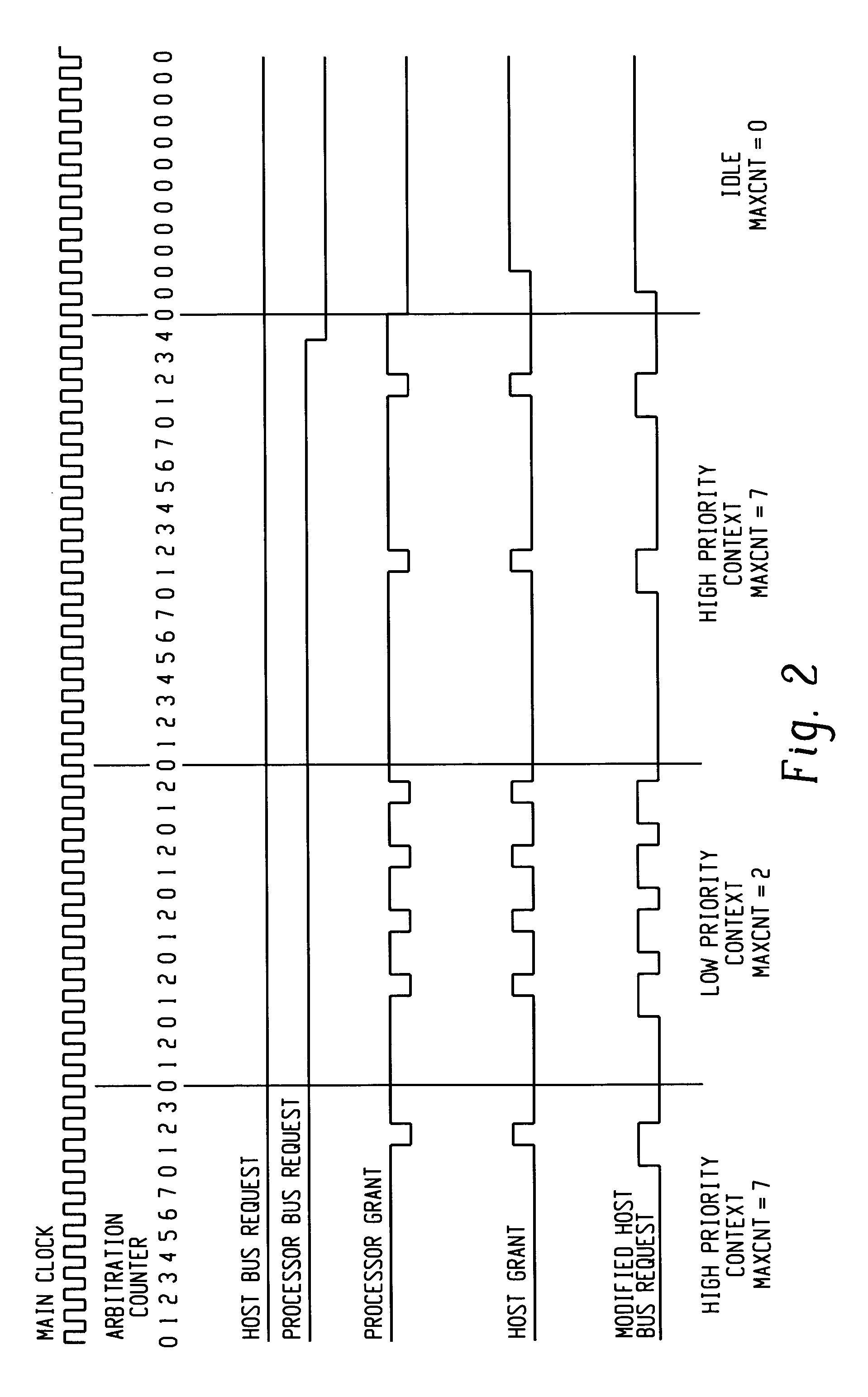Priority-based arbitration system for context switching applications
a context switching and priority-based technology, applied in the field of priority-based arbitration systems, can solve the problems of inability to completely handle the host processor, affecting throughput, and affecting throughput, so as to achieve the effect of rapid adaptation
- Summary
- Abstract
- Description
- Claims
- Application Information
AI Technical Summary
Benefits of technology
Problems solved by technology
Method used
Image
Examples
Embodiment Construction
[0023]It should be appreciated that while a preferred embodiment of the present invention is described in connection with a MAC processor and HOST processor vying for access to a shared memory via a shared bus, the present invention is applicable to any number of different devices vying for access to a shared resource.
[0024]Referring now to the drawings wherein the showings are for the purpose of illustrating a preferred embodiment of the invention only and not for purposes of limiting same,
[0025]FIG. 1 shows a HOST and MAC processor configuration, including a priority-based arbiter 100 in accordance with a preferred embodiment of the present invention. As indicated above, HOST processor 4 and MAC processor 20 will vie for access to shared bus 60, so as to access shared memory 70. A central memory / bus arbiter 50 determines which processor will be granted access. Host interface 10, MAC processor 20, Central memory / bus arbiter 50, shared bus 60, shared memory 70, and priority-based ar...
PUM
 Login to View More
Login to View More Abstract
Description
Claims
Application Information
 Login to View More
Login to View More - R&D
- Intellectual Property
- Life Sciences
- Materials
- Tech Scout
- Unparalleled Data Quality
- Higher Quality Content
- 60% Fewer Hallucinations
Browse by: Latest US Patents, China's latest patents, Technical Efficacy Thesaurus, Application Domain, Technology Topic, Popular Technical Reports.
© 2025 PatSnap. All rights reserved.Legal|Privacy policy|Modern Slavery Act Transparency Statement|Sitemap|About US| Contact US: help@patsnap.com



